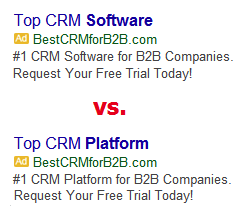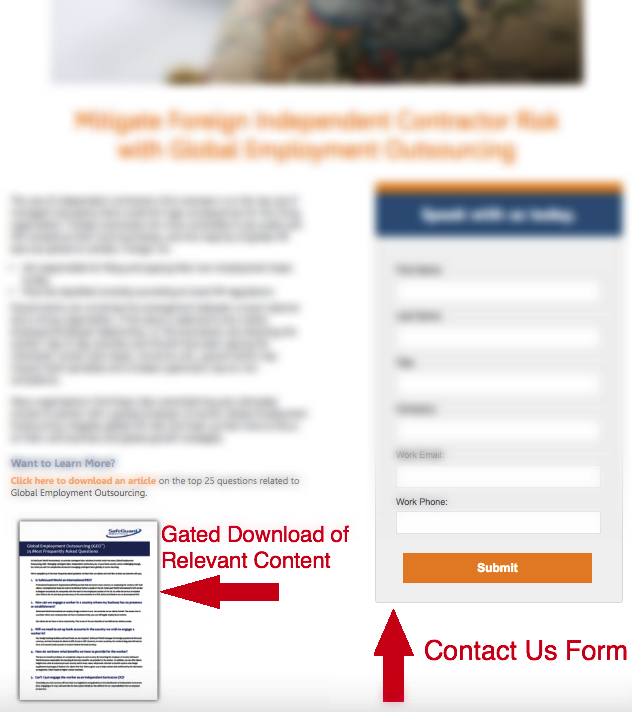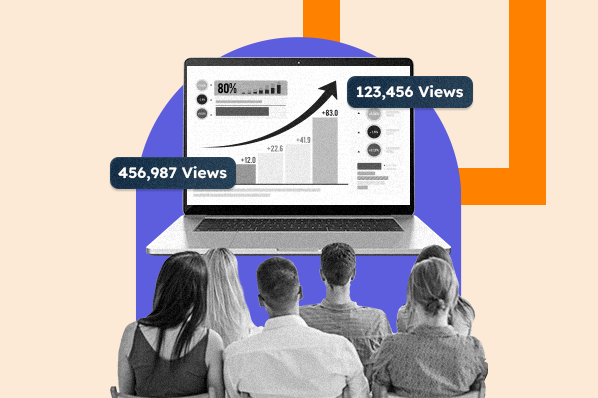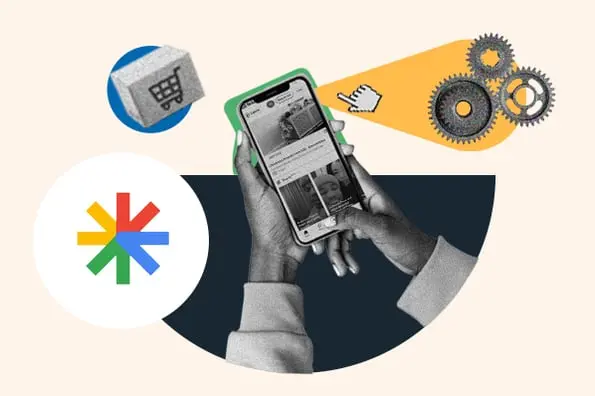Smart marketers know Google AdWords is an essential part of a strong B2B marketing strategy. Since Google searchers are actively looking for either pertinent answers or solutions, marketers can quickly capture their attention and convert them to leads with search engine marketing (SEM) campaigns—as long as they take the right approach, of course.

Neatly Organize Your Keywords and Ad Groups
One of the most critical elements of your SEM campaigns is the organization of your keywords. Here are the best practices to create ad groups:
- Group keywords with similar themes: For example, put all “software” keywords in one ad group, separate from “solutions” or “platform” keywords
- Divide informational keywords and transactional keywords: For example, “what is customer relationship management” versus “buy crm software”, or “do i need crm” versus “customer relationship management solutions”
Structuring your ad groups like this allows you to tailor both your ad copy and your landing page to best fit the keywords, and makes it easier to detect performance patterns and execute appropriate bid and status adjustments.
By grouping keywords by theme, if a prospect searches “crm platform” and is served two ads—one with the headline “Top CRM Software” and one with the headline “Top CRM Platform”—that prospect is more likely to click on the latter. Relevancy is key in every part of SEM campaigns.

The second recommendation is primarily so you can match your landing page to the searcher’s level of intent. It would be unwise to use a direct-response ad (“Call Us Now”) and a Contact Us landing page with an individual who searched “what is crm.”
Similarly, you may not want to send someone who searched “buy crm software” to a landing page where they’re invited to download an eBook about general customer relationship management advice.
BONUS TIP: It’s all right to have ad groups with only one keyword if there are no similar terms with which that keyword can be grouped. But do not create a “Miscellaneous” ad group to lump together all of the keywords that don’t seem to fit anywhere else. If the keywords in an ad group aren’t related, you won’t be able to create ads relevant to each of them, which will lead to poor click-through rates and low conversion rates. So please, just don’t do it.
Enhance Your Ads with Extensions
AdWords offers many ways to beef up your search ads with extensions, and you should use as many as possible. Here’s why:
- Your ads will take up more of that precious real estate in search results, pushing your competitors farther down the page
- Searchers can learn more about your company without clicking your ad
- You can provide links to additional landing pages
- Google rewards those who use ad extensions with higher quality scores, which means lower cost per click and, in turn, a lower cost per conversion
The biggest downside of AdWords is the character limit. It’s difficult to give a complete summary of the content you’re offering or the total benefits of your product in only 70 characters.
With ad extensions, marketers can not only include more information about the company (using callout extensions and structured snippets), but they can also include four more links in addition to the main landing page. This means you can offer five different conversion opportunities with one ad.
Also available is the review extension, which allows marketers to append a product review to the ad, helping lend credibility to your business. There is also the call extension, which lets marketers add a phone number to the ad, encouraging high-intent searchers to connect with your company immediately.

Not all of the AdWords extensions will be appropriate for your advertising, but there certainly are no drawbacks to using those that are.
Use the Proper Landing Pages
B2B SEM campaigns traditionally use two types of landing pages: direct-response and content downloads. Both are equally important in paid search marketing.
Many marketers make the critical mistake of not taking advantage of content. They assume the best practice is to cut to the chase and simply tell searchers, “Let’s talk,” regardless of where the searcher is in the buyer’s journey. However, the actual best practice is to use paid search together with content marketing to start the lead nurturing process.
Say a prospect is just beginning his research. He’s heard of CRM software but isn’t sure if his business needs it, so he Googles “what is crm software.” Marketers who recognize the importance of intent (and who have meticulously organized their ad groups) would serve an ad featuring a free download of their eBook, “The 10 Benefits of Using Customer Relationship Management (CRM) Software.”
The searcher sees this ad, is interested in the download, and submits the request form. The prospect now has a useful guide to help him with his research, and the company has his contact information.
The core principle of content marketing is to start a conversation with prospective customers by offering them helpful eBooks, whitepapers, blogs and industry reports related to their needs, rather than jumping right into a sales pitch.
Content marketing is about demonstrating value to prospects, which is crucial in a consumer-empowered marketplace. Sending a visitor straight to a Contact Us page when he’s in the early stages of the buyer’s journey is kind of like proposing on the first date.
BONUS TIP: Feel free to have multiple conversion opportunities on your PPC landing pages. For instance, include a link to a gated PDF download of an industry report or eBook on a Contact Us page (example below). If a prospective customer arrives on the landing page but doesn’t want to chat right then, they can download the content instead, and you still capture their email address. Win-win!

The proper use of content in AdWords campaigns allows marketers to build trust and establish the kind of relationships with prospects that help them feel more comfortable making what is often a hefty financial commitment. And with HubSpot's Ads Add-On, it's easy to manage both content and AdWords campaigns in one platform.
AdWords can be a profitable channel, but it’s important to remember that SEM campaigns can take time to show their worth. If you’re patient, follow this advice and use all of the tools at your disposal, you’ll see how much paid search can boost your overall ROI.



![The Ultimate Guide to Google Ads [Examples]](https://blog.hubspot.com/hubfs/adwords-ppc_4.webp)






